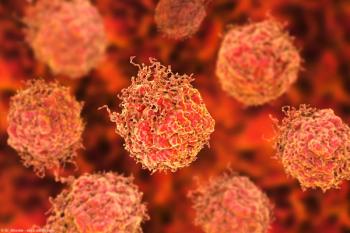
Pandemic-induced delays in RT for prostate cancer unlikely to impact survival
Starting radiotherapy up to 6 months following the start of androgen-deprivation therapy was not linked to poorer overall survival outcomes.
Starting radiotherapy (RT) up to 6 months following the start of androgen-deprivation therapy (ADT) was not linked to poorer overall survival (OS) outcomes compared with starting RT before ADT in patients with unfavorable intermediate to very high-risk prostate cancer, according to a retrospective analysis.1
Extrapolating these findings to the COVID-19 pandemic suggests delaying RT initiation is a viable option for patients with cancer, a group linked to a high risk of COVID-19 mortality.
"Our data suggest that patients can wait for COVID-19 cases to go down before starting radiation. Or, if there's a chance a surge is coming, they could consider undergoing radiation a little earlier than planned and complete it before the surge arrives," study author Vinayak Muralidhar, MD, a resident in the Department of Radiation Oncology at Brigham and Women's Hospital, stated in a press release.2
"The findings are reassuring to patients and allow us to come up with a flexible radiation schedule for prostate cancer that ensures their safety," added Muralidhar. "The results have important implications for patients in areas experiencing a surge in COVID-19 cases who can opt to wait for a safer time to come in and initiate treatment. In the future, we can also look at other types of cancers and treatments and see how delaying therapy has an impact on survival."
Using the National Cancer Database, the investigators identified 63,858 men diagnosed with prostate cancer between 2004 and 2014 who had unfavorable intermediate-risk or high-risk/very high-risk disease per NCCN guideline criteria, and who were treated with external beam radiation therapy and androgen-deprivation therapy.
Across all 63,858 patients, the mean age was 69.9 years, 79.2% were White, 16.8% were Black, 2.2% were Asian American, and 0.2% were Native American.
Patients were stratified into 4 groups based on when they received RT: 0 to 60 days prior to starting ADT (reference group; n = 3572); 1 to 60 days before starting ADT (n = 23,207); 61 to 120 days after starting ADT (n = 30,285); and 121 to 180 days following the start of ADT (n = 6794). Using mathematical modeling the investigators compared 10-year OS across the groups.
There were 4220 patient deaths among the cohort of men with unfavorable intermediate-risk prostate cancer. In the groups defined by RT 0 to 60 days before ADT, 1 to 60 days after ADT start, 61 to 120 days after ADT start, and 121 to 180 days after ADT start, the 10-year OS rates were comparable at 59.2%, 57.9%, 62.3%, and 58.9%, respectively. The modeling showed no statistical difference between OS between the group receiving RT before ADT and the groups receiving RT after ADT: 1 to 60 days after (HR, 1.03; P = .64);61 to 120 days after (HR, 0.95; P = .42); and 121 to 180 days after (HR, 0.99; P = .90).
The findings were similar in the group of patients with high-risk or very high-risk disease, in which there were 10,959 total deaths. In the RT before ADT group, the 10-year OS rate was 58.9%. In the 3 groups of patients receiving RT post-ADT, the 10 year-OS rates in order of increased RT delay were 51.7%, 54.8%, and 52.4%, respectively. There was no significant difference in OS in these 3 delayed groups compared with those receiving RT before ADT: 1 to 60 days after ADT (HR, 1.07; P = .12); 61 to 120 days after ADT (HR, 1.04; P = .36); and 121 to 180 days after ADT (HR, 1.07; P = .17).
"Our hope is that our study helps patients and providers make decisions about the timing of treatment," Edward Christopher Dee, a fourth-year student at Harvard Medical School who was the first author of the study, stated in the press release. "These decisions may allow patients to decrease their risk of exposure to COVID-19. Our findings may also provide reassurance to patients and providers who choose to delay treatment."
References
1. Dee EC, Mahal BA, Arega MA, et al. Relative timing of radiotherapy and androgen deprivation for prostate cancer and implications for treatment during the COVID-19 pandemic [published online August 13, 2020]. JAMA Oncol. doi: 10.1001/jamaoncol.2020.3545
2. Delaying prostate cancer radiation therapy offers room for flexibility in pandemic peak. Published online August 13, 2020. https://bit.ly/3h8c4f7. Accessed August 18, 2020.
Newsletter
Stay current with the latest urology news and practice-changing insights — sign up now for the essential updates every urologist needs.


















